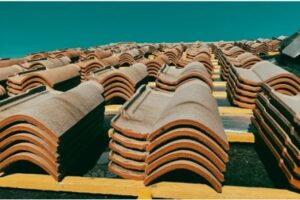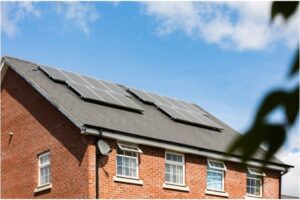You’ve spent all day setting up your brand-new above ground pool in your backyard. The sun is shining, the water is crystal clear, and you can’t wait to take a dip.
But as soon as you jump in, you’re hit with a strong smell of chlorine, and your skin starts to itch. What went wrong?
Don’t worry, you’re not alone. Many beginner pool owners struggle with understanding the basics of above ground pool chemistry. But fear not; this blog post will serve as a guide to help you navigate the sometimes daunting world of pool chemicals.

Table of Contents
Key Chemical Components for Pool Maintenance
Maintaining proper chemistry in your residential pool is essential for clear, safe, and enjoyable swimming. The key chemical components for pool maintenance include chlorine, pH level, alkalinity, and calcium hardness.
Chlorine
This powerful chemical is essential for killing harmful bacteria and algae that can thrive in pool water. The recommended chlorine level for above ground pools is between 1-3 parts per million (ppm).
Adding too much chlorine can cause skin and eye irritation, while too little can leave your pool vulnerable to bacteria growth.
pH Level
One key factor in pool chemistry is the pH level, which measures the acidity or basicity of the water. The ideal pH level for a pool is between 7.4 and 7.6, as this is the same range as human tears and sweat. A high pH level can lead to cloudy water and can cause skin and eye irritation, while a low pH level can cause damage to pool surfaces and equipment.
Keeping the pH level in check will not only ensure a comfortable swimming experience but also extend the life of your above-ground pool.
Alkalinity
Alkalinity refers to the level of alkaline substances in the water, such as bicarbonates and carbonates. It acts as a buffer in the water, preventing large fluctuations in pH levels. Ideally, alkalinity should be kept between 80 and 120 parts per million (ppm).
Low alkalinity levels can cause the pH to become unstable and lead to corrosion of pool surfaces and equipment. In contrast, high levels can make the water cloudy and difficult to balance.
Calcium Hardness
Calcium hardness pertains to the quantity of calcium found within the water. Too little calcium can lead to erosion and damage to pool surfaces, while too much can cause cloudy water and scale buildup. Testing the calcium hardness regularly and adjusting it to the recommended range (between 200-400 parts per million) is key for maintaining a balanced pool.
Troubleshooting Common Chemical Imbalances
It’s common to experience chemical imbalances, which can affect the cleanliness and clarity of your pool water. To troubleshoot these issues, it’s important to test your pool’s chemical levels and adjust accordingly regularly.
With proper knowledge and maintenance, you can enjoy a clean and healthy above ground pool all summer long. And now that you have the basic knowledge, you can even get certified as a pool operator. You can find sites like Poolcerts.com for a pool certification course.
Understand How Above Ground Pool Chemistry Works
In conclusion, understanding the basics of above ground pool chemistry is crucial for maintaining a clean, safe, and enjoyable pool. By following the guidelines and tips outlined in this guide, you can easily maintain the chemical balance of your pool and ensure it stays in optimal condition.
Now, go out and apply these principles to keep your pool crystal clear. Happy swimming!
Want to read more helpful articles? Visit our blog today!




